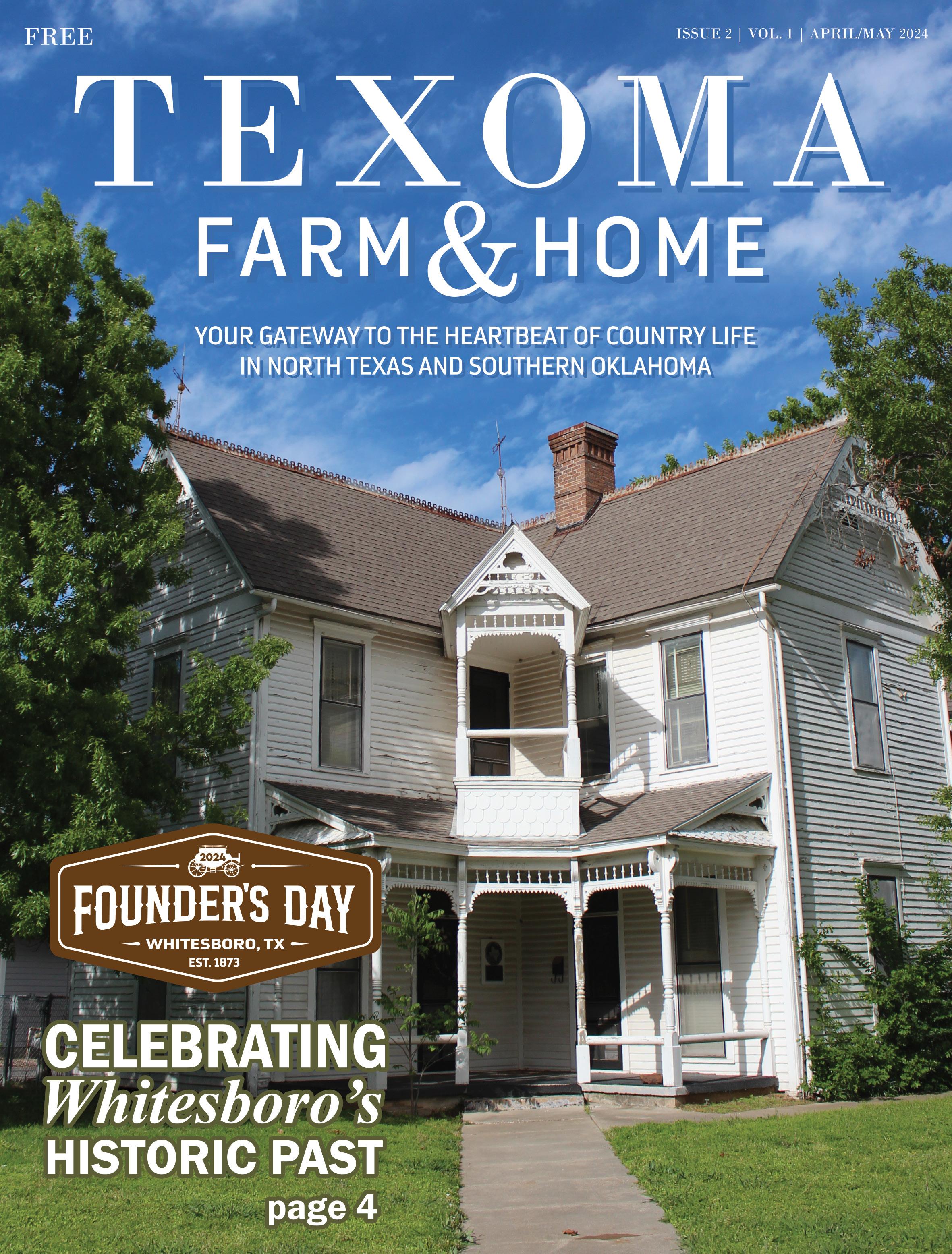
STAFF & CONTRIBUTORS
PUBLISHERS
Austin & Jennifer Lewter alewter@ntin.net
EDITOR
Jessica Edwards
editor@ntin.net
MARKETING DIRECTOR
Sherrie Nelson
sales@texomafarmandhome.com
CONTRIBUTING WRITERS & PHOTOGRAPHERS
Mary Jane Farmer
Jolee Skinner
Kiley Morgan
Rebecca Meals
Samantha Greene
Cory Baumann
Brad Nixon


Welcome to the second issue of Texoma Farm & Home! This issue focuses on the splendors of spring. Here you’ll learn about some wonderful community events taking place in the coming months.
Jim Bowie Days in Bowie, Texas brings a rodeo, live music and an annual celebration. St. Jo’s Bullfest returns in May with mutton bustin’, calf scramble and ladies’ steer scramble. Pirate Island’s Car Show in Collinsville draws hundreds every year, and the 11th annual Cruisin’ Car Show in Nocona is a two-day event in May that will also delight car enthusiasts. Whitesboro honors its history while celebrating its future with an inaugural Founder’s Day festival in June.
Stagecoach rides, gunfight shows and tours of historic buildings, like the one featured on the cover of this issue, take us back to a simpler time – a time that many are trying to recapture today. As more people look for an escape from the hustle and bustle of city life, they turn to homesteading and raising backyard chickens – ways to become more independent and self-sufficient in a world that is seemingly becoming more difficult (and expensive) to navigate.
In these pages, you’ll find places to visit, things to see and events to attend that will remind you to embrace the land and farm life of Texoma and Western Grayson County.
Slow down. Take a break. Enjoy the beauty that surrounds us. Happy spring!
 Jessica Edwards
Jessica Edwards
Editor- Texoma Farm & Home
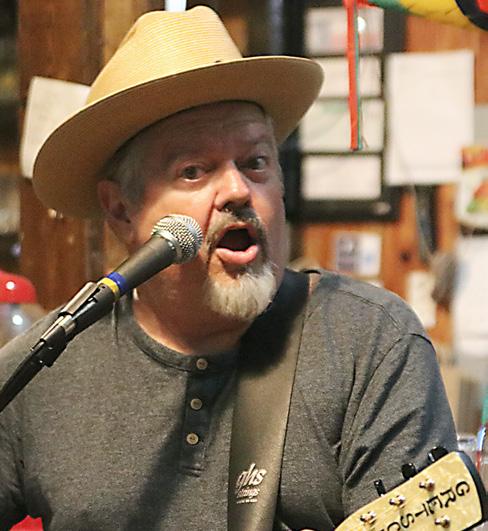


2 - texomafarmandhome.com Country Life in North Texas & Southern Oklahoma
L E W T E R PUBLISHING WHITESBORO, TEXAS Texoma Farm & Home PO Box 68 - 130 East Main St. Whitesboro, Texas 76273 903.564.3565 texomafarmandhome.com Texoma Farm & Home is a high quality bi-monthly magazine dedicated to country life in North Texas and Southern Oklahoma. We strive to give our readers and advertisers the best possible service. Our rate card is applied equally to all. This magazine reserves the right to reject any advertisement at the discretion of the publisher. The advertiser shall defend and indemnify and hold harmless Texoma Farm & Home against any claim of liability or loss asserted or established against it by reason. The company’s liability for major errors lessening the value of an advertisement shall be limited to any advertisement or any part thereof submitted by or published at discretion of the advertiser. The company’s liability for major errors lessening the value of an advertisement shall be limited to the advertisement as it shall elect.
From the Editor...
Publishers of the Pg. 16 Pg. 19 Pg. 30
Stop and smell the lavender
by Jessica Edwards
While many may consider Lavender Ridge Farms the best kept secret in Cooke County, Jerry Ware and sister Jane Dane have known about this property their whole lives. After all, it belonged to their great-grandparents and has been in the family for more than 150 years.
In the 1920s and ‘30s, the family farmed strawberries and melons. In the 40’s, they drilled for oil and, let’s just say, they didn’t have to farm anymore.
The land sat for 70 years before Ware and Dane breathed new life into the property.
Ware, a horticulturist who was working in Fort Worth and Dane, an Aveda management specialist, were both tired of commuting in the Metroplex. They decided that moving to their family’s land (located halfway between Whitesboro and Gainesville) and starting their own business was the perfect answer.
In 2006, the siblings (who work and live on the property) opened Lavender Ridge. The plan was to grow lavender that they could cut and sell to botanical companies and also allow the public to come and harvest.
Then they opened a café, featuring lavender-infused teas, ice cream, salads and sandwiches. Food is prepared in a small kitchen and diners can either eat in a covered area or at patio tables beneath umbrellas in the back garden.
Their plans took a momentary pause, along with the rest of the world, when a global pandemic threw everyone for a loop. But unlike many businesses, Lavender Ridge thrived as business increased in their nursery.
“People were spending time at home, and there wasn’t much else to do but work in the garden,” Ware said. “Business really picked up for us.”
Lavender Ridge also began hosting festivals, but these events ultimately outgrew the space.

“Business is going so well, we don’t have to do festivals now,” Ware said.
The business has gone through some hardships, but today it’s a successful endeavor that serves a multitude of needs. Lavender Ridge has a beautiful nursery boasting a variety of plants and flowers; a store to purchase gifts, drink mixes and garden- and lavender-themed merchandise; the café; and a series of large enclosures with a menagerie of animals for guests to view.
Children and adults alike will enjoy seeing a variety of small birds, rabbits, turkeys and lemurs, to name a few.
But it’s simply the experience of just being there that seems to fill the greatest need. Lavender Ridge is tranquil, loced
off the beaten bath and hidden back amidst the farmland. It’s a restful getaway from the hustle and bustle of daily life. Whether you read a book while enjoying a light lunch, stop for a photo in a field of daffodils, or come to enjoy the beauty of the nursery, Lavender Ridge is a must-see.
Although lavender only blooms for six weeks of the year, Lavender Ridge is open on weekends (Friday through Sunday) May through October.
“We try to have interest blooming all the time,” Ware said.
Plan your visit soon. Learn more about Lavender Ridge Farms at www.lavenderridgefarms.com.
texomafarmandhome.com - 3
DESTINATION
A thriving garden center is one of the many draws that attracts visitors to Lavender Ridge Farms. (Courtesy Photo)

Whitesboro to celebrate Founder’s Day
The sound of guitars and fiddles wafting through the air. Peddlers selling their wares along the roadside to passersby. Neighbors waving from the window of a horsedrawn stagecoach as it rolls down Main Street. A dispute ending in a gunfight in the center of downtown. What sounds like a scene straight out of the 1800’s is actually a description of downtown Whitesboro at the upcoming Founder’s Day celebration this spring.
The City of Whitesboro will host the inaugural event June 7-8 to honor the town’s rich history. The town was founded in 1873 by Ambrose B. White, a retired captain in the Blackhawk War in the Illinois and Wisconsin territories. The colony began with just a few houses, but when the Butterfield Overland mail route sent its stagecoaches nearby, White built the Westview Inn to be a stop on the route.
He cared for and supplied teams of horses used on the mail route and began bringing in a steady revenue to his little
town. This attracted more settlers, and the town grew from there. The rest, as they say, is history.
Whitesboro has experienced an array of success and growth in its 150 years. From peanut farms to thriving enterprise, Whitesboro has a lot to celebrate.
“Last year’s sesquicentennial celebration gave us a renewed appreciation for how much history there is here in town,” City Administrator Julie Arrington said. “We decided to continue the celebration with an annual Founder’s Day event, a party for the entire community to enjoy. Not only are we honoring Whitesboro’s past, but also celebrating its bright future.”
The two-day festival will be a step back in time, beginning with the return of the World Serious softball game on Friday night. Two teams of business representatives will play against each other in a ballgame of ridiculous fun, in which each inning the rules change. From playing with the opposite hand to running the bases clockwise, hilarity and hijinks are
sure to please the crowd of spectators.
The fun continues on Saturday with a day of family-friendly activities and old-time fun. Staged gunfights, vendors, food, a historic firearm presentation and horse-drawn stagecoach rides are only some of the planned festivities.
Live music on the main stage will include Bluegrass Jam with Riley Gilbreath and Lone Star Blue as well as the Tejas Brothers, who play a unique style of TexMex Honky Tonk. Downtown stores will be open with plenty of opportunities for shopping.
Harkening back to last year’s 150th celebration, commemorative history books will be available for sale, as well as a dedication of the Sesquicentennial Time Capsule at Godwin Park.
“We have lots of fun planned for our residents and out-of-towners alike,” Arrington said. “Everyone is invited to help us celebrate our wonderful town.”
Watch social media for more details on the upcoming event.
4 - texomafarmandhome.com COVER
Cartwright Ranch in Benbrook will be on hand to give free stagecoach rides at Whiteboro’s inaugural Founder’s Day Celebration on June 8.
(Courtesy Photo)

Backyard chickens: still ‘your patriotic duty’
by Rebecca Meals
Springtime is here -- the season for new beginnings, for new life, for planting gardens, and of course, baby chicks. Keeping backyard chickens is an endeavor that requires little time, just a few minutes a day.
But why would you want backyard chickens? Thinking back over the last few years, three examples come to mind. First, in spring of 2020 the COVID pandemic caused a 140% increase in retail egg prices due, in part, to supply chain issues.
Next, the winter storm in February 2021 left many Texans without power for days and caused many local grocery stores to run out of basic food staples (including eggs) because trucks weren’t able to get to the stores to restock.
Lastly, an outbreak of Avian Flu in early 2022 forced officials to slaughter near-
ly 82 million birds, which not only affected the price of eggs due to a shortage of laying hens, but also created a shortage of new chicks from hatcheries.
Throughout all of these crises, backyard chicken farmers like myself were well-supplied with eggs. We also sold our eggs in the community, and when people couldn’t get chicks, we hatched and sold them.
I am a big believer that our food supply needs to be as local as possible because far too many variables affect our supply chain, from weather and natural disasters to the price of oil and the state of the economy.
While those are factors outside our control, we can take personal responsibility for our food by having chickens and gardens.
One need not look too far in the past

to see how the government once encouraged us to keep chickens and gardens. During World War I, the USDA asked all Americans to keep backyard chickens and Victory Gardens to take pressure of the food supply so that food could be sent to soldiers fighting in the war. They recommended two hens per person, stating “an interested child, old enough to take some responsibility, can care for a few fowls as well as a grown person.”
Getting started with chickens doesn’t have to be expensive. A second-hand or homemade coop and a few supplies are all that is necessary. You will want to make sure that it is well-secured against predators. The coop should be large enough for each hen to have at least four square feet of space. Roosting bars and nest boxes should be included.
Continued on page 7


6 - texomafarmandhome.com LIFESTYLES
Full-Service Horse Blanket Wash, Repair & Customized Embroidery 2512 Hwy 82, Whitesboro TX 76273 903-651-2501 HorseBlanketsHelp.com
From page 6
An additional run should provide at least eight square feet per hen. This can be an enclosed run attached to the coop, or a fenced in backyard. Free-ranging the hens in your yard allows them to get a majority of their food from grass and insects, which increases the health of the hens and their eggs, and reduces feed cost. Chickens can also eat most of your kitchen scraps. If you have a garden, this is an additional source of food for them.
It is vital to keep their coop and water clean. There are many different bedding materials to choose from, some more low-maintenance than others.
For a wealth of information about backyard chickens and to learn the basics of keeping chickens, visit www.backyardchickens.com.
Keeping backyard chickens is fun, rewarding and helps with food security. You will be doing your part to keep the food supply local. You will know where your food came from, and that it’s healthy. As Uncle Sam says: “In Time of Peace a Profitable Recreation; In Time of War a Patriotic Duty.” Let’s make it our duty once more.
At right, a World War I era poster promoting the virtues of backyard chickens. (USDA Archives)








texomafarmandhome.com - 7 Saturday, May 18, 2024 Downtown Collinsville, Texas Live Remote 11am- 2 pm * $100 cash giveaway timemachinecarshows.com Clover Road PhotographyElizabeth Kemp, official event photographer Benefiting the Tioga FCCLA Trip to Nationals During the Car Show 10 am - 2 pm Registration- 10am -
Show- 11am - 2pm call 903.429.3631 for more information
12pm
15 best homesteading skills for success
by Samantha Greene
The desire to return to a simpler, more self-sufficient lifestyle is more prevalent now than ever. Homesteading offers the opportunity to live in harmony with nature, develop self-reliance and even contribute to sustainability.
Like any worthwhile venture, homesteading requires a specific set of skills to succeed. These skills are crucial in not just surviving but thriving on your homestead. Mastering homesteading skills allows you to live a more self-sufficient, sustainable lifestyle aligned with nature. When you learn homesteading abilities, you gain independence, save money and reconnect with traditional ways of living.
Developing proficiency in homesteading takes time and dedication, but the rewards are plentiful. Focus on acquiring knowledge and don’t be afraid to ask experienced homesteaders for guidance. Start with small projects and build up your confidence and abilities.
The Top 15 Homesteading Skills for Success
1. Gardening
Not only does gardening reduce your reliance on store-bought produce, but it also provides a therapeutic connection to nature. It is an invaluable skill that ensures a steady supply of fresh, organic produce right at your doorstep. With experience, you’ll learn the art of companion planting, how to nurture soil fertility and how to manage pests organically. This understanding can enhance the yield of your crops, contributing to your self-sufficiency.
Starting and maintaining a productive garden teaches you patience and connects you to the natural rhythms of the land. By growing your own food, you control exactly what goes into the soil, ensuring healthier nourishment. Saving seeds allows you to cultivate crops ideally suited to your climate and soil conditions. There is deep satisfaction in eating fresh
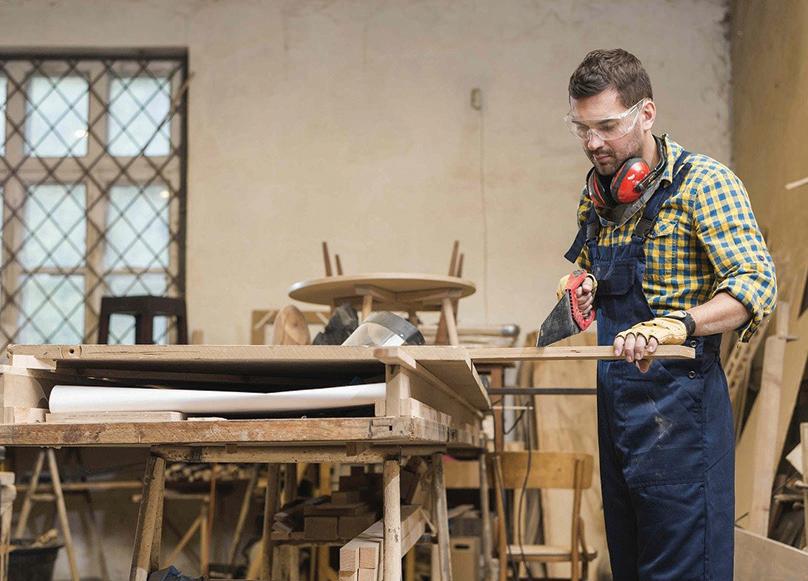
Carpentry skills can save you time and money when repairs are required on the family homestead.
produce right from your backyard. Good record-keeping of what you plant and harvest each season informs future gardening endeavors. Share extra produce to spread the joys of homegrown food.
2. Preserving Food
From canning to dehydrating and fermenting, preserving your food extends its shelf life, ensuring you’ll have plenty to eat during the winter months or in times of scarcity.
Preserving food allows you to make the most of seasonal abundance and reduces reliance on mass food production and transportation. Learning to preserve food prevents waste, captures peak flavor and provides insurance against future shortages. You’ll have access to homegrown foods like jams, pickles, dried fruits and vegetables throughout the year.
Shared preserved goods also make thoughtful gifts. Follow trusted recipes and methods to avoid foodborne illness-
es. Take a class or join a food-preserving group to build your skills. Make sure jars, lids and equipment are sterile for best results.
3. Animal Husbandry
Livestock provides not only food but also other resources, such as manure for your garden. Whether it’s chickens for eggs, cows for milk or bees for honey, each animal contributes to the homesteading ecosystem.
Caring for farm animals teaches responsibility and an appreciation for the gifts each creature provides. Interacting with livestock on a daily basis fosters a deep connection to the origins of your food. Understanding animal health and welfare ensures humane treatment and quality provisions.
Start with just one or two animals to allow time to learn proper care. Build secure housing, provide fresh water and
Continued on page 10
8 - texomafarmandhome.com
LIFESTYLES
(Courtesy Photo)

From page 8
supply a balanced diet. Partner with a veterinarian for checkups and medical needs.
4. Carpentry
From constructing coops and barns to building furniture and repairs, carpentry skills are extremely handy. These skills can save you money and provide you with the satisfaction of building and maintaining your homestead with your own two hands. With carpentry abilities, you can customize features to perfectly suit your needs.
Salvaging and repurposing materials reduces your environmental impact. The creations you craft will become cherished heirlooms, passed down for generations. Begin by learning the proper use and maintenance of hand and power tools. Start small with basic projects to gain confidence and skills. Use protective gear like gloves and goggles for safety. Check building codes for any structures.
5. Sewing and Mending
The ability to create, mend and alter clothing and other household textiles is not only a cost-saving skill but also a step towards self-reliance. This skill can extend the life of your garments and reduce dependency on fast fashion. Sewing and mending clothes allows creativity in your wardrobe while reducing waste. Learning to sew opens a world of possibilities for making and modifying fabric items exactly how you envision them.
Repairing beloved items preserves their emotional value. Teaching others to sew and mend strengthens community bonds and resilience. Invest in a quality sewing machine and supplies designed for beginners. Start with small repairs and simple items like aprons. Use patterns suited to your skill level. Join a sewing circle to exchange ideas and get guidance. Give handmade items as heartfelt gifts.
6. Cooking and Baking from Scratch
By cooking and baking from scratch, you control the ingredients that go into your meals, allowing for healthier, tastier and more economical food. This skill lets you make the most out of your homegrown produce and preserved foods. Creating meals from scratch provides nourishment while connecting you to time-honored cooking traditions. Mastering cooking and baking teaches you how different ingredients and techniques affect flavors and textures.
Begin by learning basic cooking methods like sautéing, baking and roasting. Start with simple recipes and work your way up. Make extras to freeze for busy days. Share recipes and host potlucks to widen your culinary horizons.
7. Basic First Aid Skills
With potentially limited access to immediate professional medical help, basic first aid skills can be lifesaving. This includes treating minor injuries, recognizing signs of more seri-
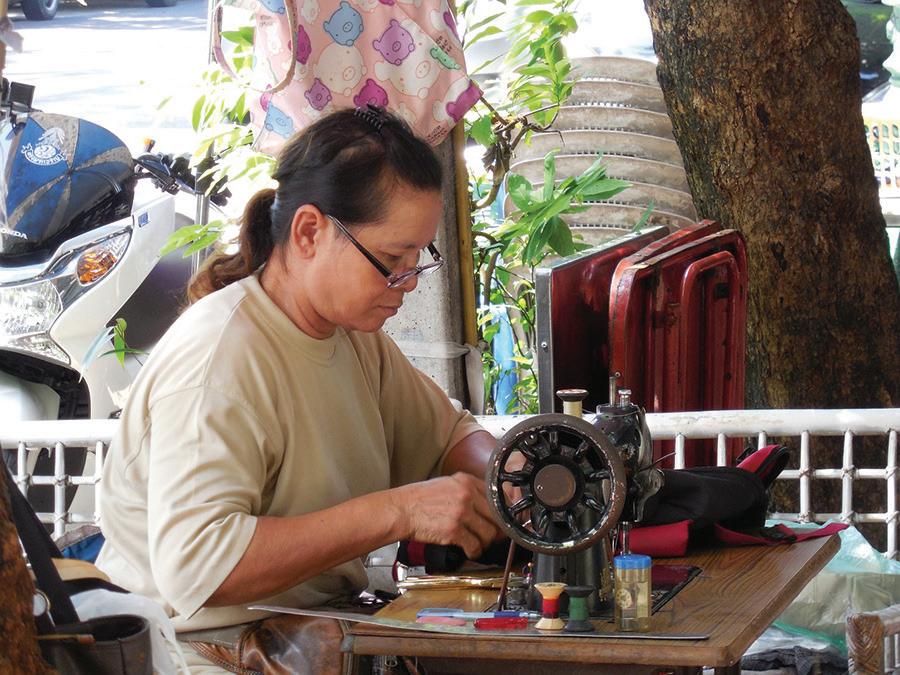
Sewing and mending can be invaluable skills on a family homestead.
(Courtesy Photo)
ous conditions and knowing when to seek medical help.
Learning first aid prepares you to respond quickly and appropriately to medical emergencies until professional care can be accessed. Having first aid abilities gives you the confidence to handle injuries and sudden illness with calm and care. You can assist others in the community when needs arise.
Continually expanding your knowledge ensures you stay current with the latest best practices. Keep first aid supplies on hand and check expiration dates. Take Red Cross classes to learn techniques. Print emergency numbers and post them near phones. Use personal protective equipment to prevent disease transmission. Remain calm, provide care and get help when needed.
8. Natural Remedy Preparation
In addition to first aid, understanding how to create and use natural remedies is a beneficial skill. From making salves and tinctures to growing medicinal herbs, the knowledge of natural remedies can come in handy for treating non-emergency health issues.
Crafting natural remedies from plants utilizes nature’s pharmacy for minor ailments. Growing medicinal herbs adds beauty and purpose to your landscape. Sharing natural remedies with others spreads healing and builds community resilience.
Properly identify plants before use. Research possible side effects and drug interactions. Follow trusted recipes from experienced herbalists. Store remedies in sterilized jars out of sunlight. Consult your doctor before using herbal treatments.
9. Foraging for Wild Food
Foraging skills allow you to take advantage of nature’s free bounty growing right in your own backyard. Always be 100% certain of plant identification before ingesting. Sustainable harvesting ensures the future availability of renewable wild food sources.
Obtain foraging field guides or take guided tours to learn
Continued on page 11
10 - texomafarmandhome.com LIFESTYLES
From page 10
about edibles in your region. Start with easy-to-identify abundant species like blackberries and dandelion. Never harvest endangered species or polluted environments.
10. Fire Making and Management
The ability to safely start and manage a fire is crucial for cooking, generating heat and even for certain preservation methods like smoking. This skill is particularly important for off-grid living. Learning how to use a homesteader wood stove is one of the essential components for success.
Mastering fire skills is key for survival, cooking and warmth in remote homestead locations. Practice fire safety by clearing flammable debris and having extinguishing tools on hand. Teaching children how to responsibly handle fire reduces the risk of accidents.
Stock up on dry kindling and fuel wood before winter. Keep multiple fire extinguishers and blankets nearby. Monitor fires always and completely extinguish them. Allow ashes to fully cool before disposal.
11. Water Collection and Purification
Skills in rainwater harvesting, water purification methods, and even well digging ensure that you have access to clean water. Implementing reliable water collection and purification sys-

tems provides the life-giving resource of clean water. Installing gutters, barrels, and filters allows you to capture nature’s water bounty falling from the sky.
Learn how to sterilize water over a fire in case of emergency. Conserve water by reusing greywater and fixing any leaks. Calculate your usage needs and research collection options best suited for your climate. Maintain and routinely sanitize systems to prevent contamination. Have backup bottled water available. Monitor quality with test kits for potability.
12. Navigation and Orienteering Skills
Knowing how to navigate using a compass, map, or natural signs can ensure your safety. This skill is also useful in land management and planning. Sharpening navigation skills prevents you from becoming lost and aids in property management.
Studying topography maps helps you locate water sources, ideal building locations and hidden dangers. Mark trails so guests can enjoy your land safely. Practice using a compass and map together to pinpoint your location. Note landmarks and points of interest. Let someone know your route before going out alone. Pack emergency communication and survival gear. Teach children early with fun orienteering games.
13. Self-Defense Skills
From warding off predatory wildlife to ensuring personal
Continued on page 12

texomafarmandhome.com - 11 LIFESTYLES FAMiLY-OWNED, FULL-SERViCE, USDA iNSPECTED PROCESSiNG PLANT AND MEAT MARKET 1610 W. PiNE ST. | NOCONA, TX 940-825-1036 | NOCONAMEATCOMPANY.COMMOD MON.-SAT. 9 A.M.-6 P.M.
safety, basic self-defense skills are particularly important in remote homesteading settings. This could mean learning to use a firearm safely, understanding basic hand-to-hand techniques or even knowing how to secure your homestead effectively.
Assessing potential risks and vulnerabilities allows you to implement appropriate safeguards. Keep dangerous tools locked away securely. Set up perimeter alarms and motion-sensor lights to deter trespassers. Remain level-headed during confrontations.
Learn safety and laws first if using firearms. Take martial arts or self-defense classes to build physical skills. Install sturdy locks, lighting and video surveillance. Travel in pairs or groups in unfamiliar areas. Trust your instincts if a situation feels unsafe.
14. Energy Production and Management
Knowing how to harness renewable energy sources like solar and wind can lead to energy independence. Plus, learning energy conservation strategies can help optimize your energy usage and save you money for other projects as well as resources.
Installing solar panels, wind turbines and high-efficiency appliances reduces your environmental impact. Monitor energy consumption to identify wasteful habits. Relying on renewables protects you from grid interruptions and rising energy costs.
Calculate your needs and research DIY renewable systems
or professional installation. Look for rebates and tax credits to offset costs. Weatherize your home before installing solar to maximize efficiency. Position systems for optimal sun/wind exposure. Maintain systems for maximum performance.
15. Composting
Composting kitchen scraps and animal waste reduces landfill waste and enriches your soil, leading to healthier crops. It’s a simple but effective way to contribute to a more sustainable lifestyle. Composting recycles organic waste into fertile soil amendments benefiting your garden.
Maintaining a healthy compost pile is easy with the right carbon-to-nitrogen ratio and moisture level. Finished compost nourishes plants and enhances soil’s water retention and nutrient density. Vermicomposting with worms speeds decomposition. Site compost in partial shade near water and materials. Layer greens and browns in proper proportions.
Turn or stir regularly to introduce oxygen. Use compost tea or top dressings to distribute nutrients. Share extra compost with gardening neighbors.
Each of these skills is a valuable tool in your homesteading toolkit. Like any new endeavor, becoming proficient will take time and practice, but remember, every expert was once a beginner. So, be patient with yourself as you grow and learn on your homesteading journey. Immerse yourself in homesteading books, podcasts and community groups to continually expand

12 - texomafarmandhome.com From page 11
What’s behind a hangover?
The National Institute on Alcohol Abuse and Alcoholism notes that dehydration is a major contributor to some of the more notable symptoms of hangovers, which are a common side effect of drinking too much.
The NIAAA notes that alcohol suppresses the release of the hormone vasopressin, which sends signals to the kidneys that cause them to retain fluid. Without the release of vasopressin, the need to urinate increases, leading to excessive fluid loss.
Fluid loss causes mild dehydration, which is why many people experiencing hangovers feel thirsty and tired and deal with headaches the morning after drinking too much.
The National Institute on Alcohol Abuse and Alcoholism notes that dehydration is a major contributor to some of the more notable symptoms of hangovers. (Courtesy Photo)
Texoma Farm & Home


texomafarmandhome.com - 13 HEALTH
Land sales: when to buy, where to begin?
by Corey Baumann
When people think of real estate, their initial thought is the housing market. But in North Texas, land sales are a hot commodity. From recreational land used for hunting to a homestead on some acreage, people in our area are looking for property where they can spread out and get away from the hustle and bustle of the big city.
However, much like the housing market, land sales can be a somewhat tumultuous endeavor. In quarter 3 of 2023, North Texas land sales volume declined by 44 percent while prices climbed by eight percent. Total dollar volume declined by 41 percent while total acreage sold dropped by 45 percent.
As growth continues in the North Texas area, from Sherman to Denison and along the Dallas North Tollway expansion, property values are becoming increasingly difficult to nail down.
North Texas land values have become very localized. A common question for today’s land realtors is, “What is the average price per acre in our area or in DFW?” The fact is, values could vary greatly from one county to another (and even from one town to another), depending on several factors.
When providing a market analysis to clients, it’s not as sim-

ple as just pulling a few sold properties in the area and slapping a price per acre on them.
A good realtor will spend whatever time is needed to arrive at the most accurate value. They’ll put boots on the ground to truly understand the property and all that it has to offer along with evaluating sales data and what is currently on the market. Unfortunately, our local market shifts almost daily.
Sellers who are trying to realize 2020-2022 prices are experiencing longer than normal days on market. This has created opportunities for buyers as well as those folks who are looking to sell. Sellers can position themselves well in this market to still see historical sale prices, and buyers have more negotiation power with the longer days on market.
The elephant in the room continues to be interest rates as, in many cases, buyers are slow to move on offers. Waiting for rates to come down is a natural instinct and logically makes sense in some cases, but experts just don’t see interest rates coming down much in the foreseeable future.
The reality is current interest rates are historically right


Continued on page 15

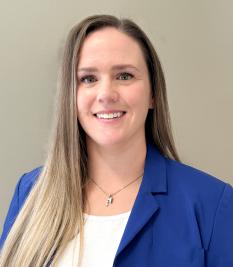
14 - texomafarmandhome.com REAL ESTATE
Care, Weight Management, Hormone Replacement, DOT Physicals, New Services Coming Spring 2024: Aesthetic Injectibles for Fine Lines & Wrinkles New Patients Welcome M-F 8:30 am-6 pm Janna Hobbs, APRN, FNP-C Heather Burkleo, APRN, FNP-C 109 Bois D’Arc, Whitesboro, TX 76273 (903)56 4-3366
Primary
REAL ESTATE
From page 16
where they should be for the market. Just ask anyone who bought property in the 1980s.
The risk of waiting to buy your dream property is that, even if rates decrease, prices will continue to increase with demand. Buyers should focus on affordability. Will the property they are eyeing be more affordable if the rates drop by a tick or two? Chances are the affordability could remain the same or even become less affordable.
The answer to, “When is it a good time to buy land?” is always now. They are not making any more of it and land prices will continue to increase around DFW.
Whether you are looking to sell your generational land or purchase a piece to enjoy for years to come, speak to a land specialist. Find someone who specializes in land sales, studies the land market and understands the intricacies of land transactions. They can guide you through the

process and help secure the right property for you.

texomafarmandhome.com - 15
Corey Baumann is a local North Texas Land Specialist with Whitetail Properties Real Estate.
North Texas abounds with land suitable for all types of wildlife.
(Courtesy photo)

Country song man:
Fred Spears has made a life of the music business
by Mary Jane Farmer
When you sit in a Freddie Lee Spears’ audience, you quickly realize he’s as genuinely classic as the songs he sings.
Freddie Lee, or ‘Fred’ as he’s often called, has been playing guitar since he was 14. He said he tried to learn when he was younger from his dad, also a guitarist, but didn’t quite get it until his early teenage years. Now, he plays not only guitar, but also mandolin, dobro, harmonica, bass—just to name a few—all mixed with his soft-yet-powerful voice and the songs’ caring emotions.
“I got to playing mandolin because I wanted to learn to play the fiddle. The scales are the same, but I never transferred to the fiddle,” he said. “I’ve also been enamored with dobro and slide guitar. I never really wanted to play pedal
steel, and it’s a shame because two or three times in my life, I’ve had the chance to learn from experts.”
He mentioned two pedal steel players of much local renown.
“Luther (Thompson) was one of them, and so was Jim Richmond. But look, it’s about knee rotators, 10 strings and 12 strings,” Fred said.
After a night at the Grand Ol’ Opry, when he was still a little redneck, Freddie Lee said he got to thinking, “Who gets to do that. I saw Jim Reeves, Ernest Tubb was a big star. I liked Lonzo & Oscar.”
And that was a bit of an incentive to get serious on the guitar. He did and he’s been playing ever since.
Continued on page 17
16 - texomafarmandhome.com
ENTERTAINMENT
Playing a St. Patrick’s Day concert, from left, Bob Penhall, Fred Spears, Shelly New and Miles Penhall.
(Photo by Brad Nixon)
From page 16
“I played school dances,” Freddie Lee said. “They had dances at the community-supervised programs for the youth, and I played a lot of them.”
In 1970, Fred got drafted into the U.S. Army and, he said, he spent much of his service time at Dugway Proving Grounds in the middle of Salt Flats, Utah. When his company commander learned that Fred played the guitar, he got him some Salt Flats gigs, for $65 a night.
“We made $90 a month in the Army, and we all tried to have a side way to make ends meet. I was a janitor, as well. Janitor was good—it was on base and after hours,” he said.
After the Army stint, Freddie Lee found himself in Nashville.
“Mostly there, I played Moose Lodges, Elks, VFWs, and American Legions,” he said.
Next up was a stint in Sammi Smith’s band (Help Me Make It Through the Night).
“She was so good, but past the age to be able to have a band,” Fred said.
So, when he got asked again to travel, it was with David Allen Coe, he
Continued on page 18
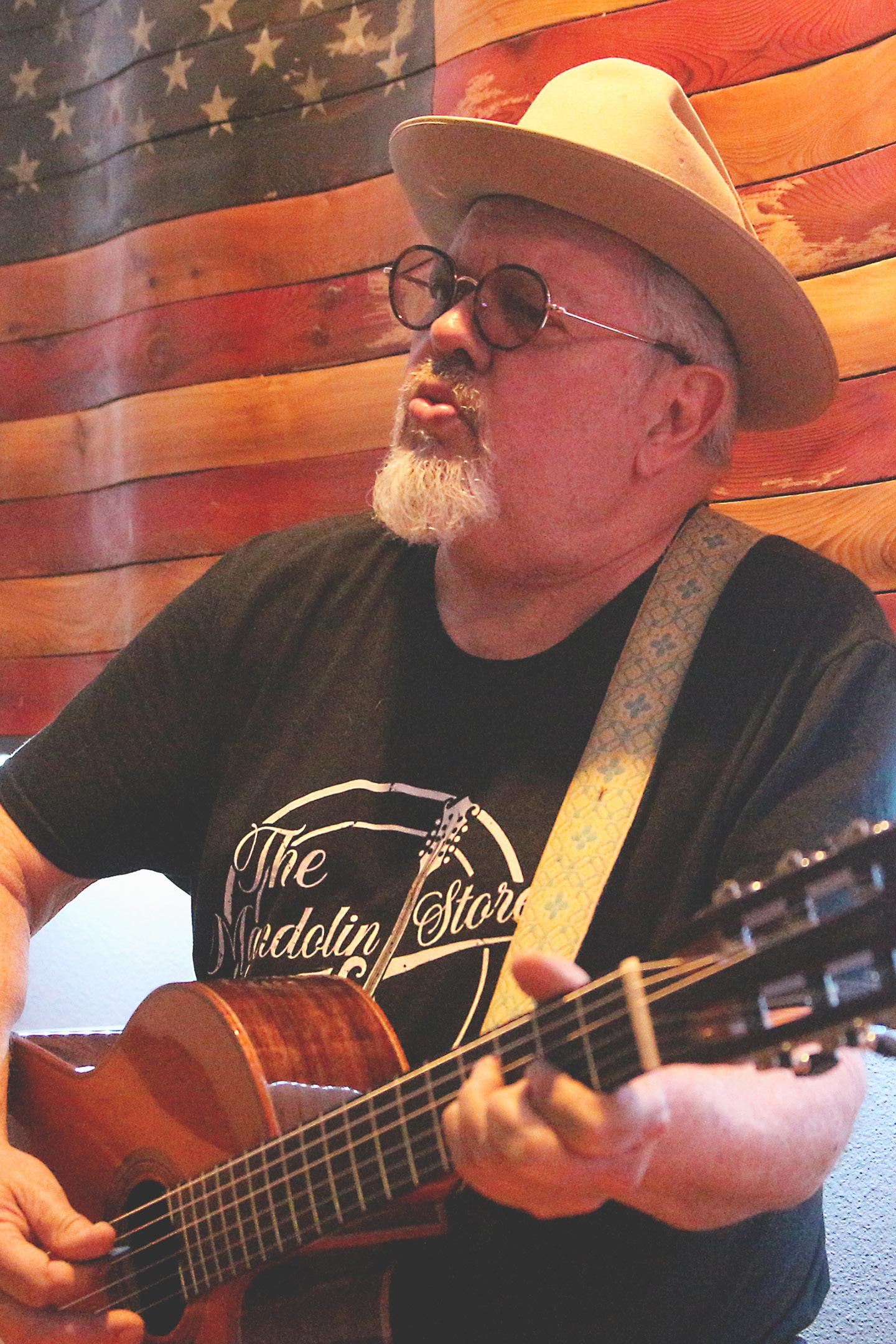

texomafarmandhome.com - 17 ENTERTAINMENT
At right, Fred Spears performing a solo show at the American Legion in Van Alstyne .
(Photo by Mary Janne Farmer/Scene in Town)
From page 17
said ‘Yes.’
That experience got him into songwriting and he co-wrote with Coe on several songs that made it onto the charts, including “Under Rachel’s Wing.”
He said, and it’s confirmed, that Coe basically went bankrupt and lost all the publishing rights to the songs he and Freddie Lee had co-penned.
Fred said that he does still get mailbox money from Broadcast Music, Inc. from airplay on the songs.
From there, Fred went on the road with Rusty Wier as a member of his Tennessee Hat Band, touring from 1975-1980.
“Rusty was a great guy, knew how to work a crowd. He wrote, ‘Don’t It Make You Wanna Dance,’” Fred said.
And again, a few stints with Coe and that’s when he moved to North Texas.
“I moved back to Nashville for a while, but I was down here so much, and I liked living in Dallas. But,” he added, “I got tired of driving from Dallas to up here in the Texoma area. We traveled so much, from California to Colorado. We played at Lucille’s and Calhouns a lot, so I just moved up here. I bought me a little place. Sometimes it’s been a struggle to pay for it, but I’ve managed.”
For a long time, maybe a decade or more, Fred fronted the band Little Big Iron, one of the more popular ones of the area and the era.
Now, he said, he and Brent Frailicks and the young area musician Sawyer Guymon are quite often seen on-stage together, not to mention Sawyer’s dad, Greg Guymon.
“1-2 check check check,” came from the stage at the James Adams Post 376 American Legion in Van Alstyne.
Joining Freddie Lee were another of his constant companions, Frailicks, and American Legion member Kenneth Gentry.
Three guitars and three vocals in an amazing, very listenable song swap. Quite often, it would be Spears playing lead and Frailicks and Gentry on rhythm, and next time the lead would go to either of the other musicians gracing the stage.

Harmonies abound.
And it was the classics, Fred’s favorite music, that all three belted out. “The Night They Drove Old Dixie Down,” “Bandy the Rodeo Clown” and “Green Green Grass of Home,” plus about three hours more of the classics that stand today’s earbuds’ and country hearts’ test of time.
Now, at that gig, and just about any other in which Freddie Lee is involved, anyone in the crowd could come up and sing as well. He led the Wednesday night Open Mic Nights at Loose Wheels Texas in Denison until it closed a few years ago. And that stage was always packed, as was the listening audience.
When asked what strengths it takes to hold an open mic, Spears jumped right over the suggestions of ‘knowledge,’ ‘experience’ and ‘just what?’
He said, “The best thing’s to be able to not leave a slightly-inexperienced singer up there looking like he’s got egg on his face.”
Having played with many of the Redneck Rock era’s leaders, i.e.: Smith and Wier, Fred has just about seen, heard, or played through it all. When asked, if he had a chance, what current artist would he want to work with today, he hesitated
a bit in thought, then said with certainty, “I would play with Buddy Guy. I’m really also a bluesman, and there are others out there, too, that I would choose.
For now, most all of the songs I sing are before 1975,” he said. “In certain situations, you have to play what the audience wants to hear. When I play solo, it’s mostly 70s country and pop. When I play with Greg (Guymon), we go off on tangents. As a band, we’d play two fast and one slow song, with a (premade) song list. We spent very little time in between songs.
“I identify with bluegrass more than anything else, and with country ballad. I love R&B, but don’t have a growly-enough voice.”
Freddie Lee Spears can be seen and heard every Tuesday night at the North Rig Grill in Denison (7-10 p.m.); at the American Legion Lakeside on the last Friday of each month; and every other Thursday at the American Legion in Van Alstyne, again starting at 7 p.m.
And then there’s the Ivanhoe Ale Works on a Saturday of “every other month,” he said. He posts the gigs a few days ahead of time on his Facebook page.
“And I have, or am in, a pretty good church band, too,” he said. That Leap of Faith Church has recorded a six-song Christian CD of its musicians, and this includes three tunes which Fred wrote.
When asked if anyone had told Freddie Lee that he has influenced them and their music, his answer was modest.
“Miles (Penhall) has said so and so has Sawyer (Guymon). That’s encouraging,” he said.
Both of the young men were, like Freddie Lee, about 14 years of age at their serious starting part.
“Size matters,” Freddie Lee said. “That’s when you get to the size that you can really play the guitar, where your arms can correctly make the chords… and that’s encouraging. It’s kind of a thread that runs up and down through music. Younger people learn from older people.
“Maybe we’re (old-timers) just passing along information, but sharing the passion, too,” he said.
18 - texomafarmandhome.com ENTERTAINMENT
Fred Spears has traveled the country playing music for over 50 years.
(Photo by Mary Jane Farmer/ Scene in Town)
Dancing Through Life
Fort Worth native cites dance for life’s opportunies
by Jolee Skinner
Marlee Hrabal, raised in the bustling city of Fort Worth, had a wonderful family-oriented childhood.
“My early childhood was filled with countless memories with friends and family,” Hrabal said. “A distinct memory I have from my childhood would be my best friend since the beginning of my life teaching me to ride my bike when I was four years old.”
She recalled back to when she first started dancing as well.
“If you ask anyone, I was always found dancing at a local dance studio, where I spent 19 long years of my life participating in competitive dance,” Hrabal said.
As a younger sister to her brother Conner Hrabal, Marlee and Conner are separated by an eight-year age gap. She talked about the age cap of her and her brother influencing their relationship.
“Yes, the eight-year age gap did affect our relationship for the better and sometimes for the worse,” Hrabal said. “With us being so far apart in age, it did create some struggles with trying to personally connect due to us being at dif-
ferent stages in our lives.”
She says it sometimes influenced their parents’ treatment towards them.
“I would say yes our parents did parent us differently for different reasons. For example, since my brother was way older than me, he got to do different things than me since I was young,” Hrabal said.
But Marlee’s childhood was filled with special moments and challenges. Cheering for Conner at high school football games is one of her favorite memories. She values the bond between her and her family. However, it was dance that truly captured her heart.
“I fell in love with dance because it gave me an outlet to express my emotions whether that be happiness, sadness or excitement for new opportunities,” Hrabal said. “Dance has given me so many teaching lessons and I’m forever thankful.”
Through dancing, Marlee learned compassion, individual expression and teamwork. These skills have shaped her into the person she is today. She even continued dancing through high school. She says she loved high school and had
Continued on page 20
At right, Marlee Hrabal’s passion for dance has unfolded several opportunities and led her to Tarleton State University where she is a member of the Texan Stars Dance Team.
(Courtesy photo)

texomafarmandhome.com - 19 PROFILE
From page 19
a very fun experience.
“I was a part of the dance team at my high school, so I was always involved within the school so that really made it more enjoyable for me,” Hrabal said.
Her influential high school teachers fueled her passionate drive for education, inspiring her to pursue a college degree in education.
“Ever since high school I always wanted to go to college,” Hrabal said. “There was never a time in my life where I thought I wouldn’t go to college.”
Which led her to Tarleton State University. Choosing Tarleton was an easy decision, from its welcoming campus and historic traditions, Tarleton was singled out for Marlee.
“Tarleton stood out to me for the campus being so welcoming,” Hrabal said. “Every person that I saw on campus truly wanted the best for you and I saw so much hope in that.”
Upon arriving at Tarleton, Marlee wanted to pursue child and family development studies.
“Growing up both of my parents were teachers and I always saw how big of an impact they made, and I knew I wanted to do that one day,” Hrabal said. “I want to be able to help children in the hospital to help brighten their lives and help them to the best of my ability so that they can have the best recovery possible.”
She relates to her major deeply. She recalls a family friend getting diagnosed with adrenoleukodystrophy (ALD) at Cook Children’s Hospital. This is a hereditary genetic condition that damages the membrane that insulates nerve cells in your brain. This genetic condition usually is found around four to ten years old. The white matter of the brain is damaged and symptoms worsen over time. If the condition is not diagnosed early on, ALD may lead to death within five to ten years. This time in her life made her realize she wanted to be a child life specialist.
“A family friend got diagnosed with adrenoleukodystrophy last October,”
Hrabal said. “He had a child life specialist at Cook Children’s Medical Center that helped the patient and the family not only cope with the new diagnosis but also helped them with all the transitions and emotions that come along with the hospital environment, the child life specialist made such an impact on the family and that’s exactly what I want to do.”
Marlee started to regularly volunteer at Cook’s in multiple units and then heard about a child life specialist internship there. She applied and got accepted. It was a big deal considering they only accept eight college students in the internship.
“Getting accepted as a volunteer and intern was an extremely big thing for me. They only accept eight college students so I could not pass the opportunity up,” Hrabal said. “They saw something great in me and I was so thankful and excited to start this new journey in my life.”
The experience has been monumental for Marlee, she has witnessed the resilience and smiles of children facing different medical challenges.
“Being an intern at Cook Children’s Medical center has been one of the biggest opportunities I have ever gotten,” Hrabal said. “Seeing the kids every day and knowing that you have made an impact in their hospital stay, or even their life, is a blessing.”
She continues to talk about how much their patients need child life specialists. They need some light to have amidst going through a dark situation.
“The kids need you,” Hrabal said. “They need someone positive in their life, some children have no one with them at the hospital so they need someone to be there for them.”
Marlee reflected on how much volunteering at Cooks has meant to her. She talked about how much she is grateful for this experience.
“Volunteering at Cook Children’s has been such a rewarding and fulfilling experience for me,” Hrabal said. “I have loved all the opportunities and connections I have made and received.”

Amazingly, Marlee talked about how she has yet to have any negative experiences, the environment at Cook Children’s has made every moment fulfilling.
Marlee continues to inspire those around her. McKenzie Shelton is a student at Tarleton and has worked with Marlee in dance related activities.
“Marlee is a great example of what a leader should be,” Shelton said. “She listens to the input of others, is hard working and is very resilient.”
Marlee’s leadership even caught the attention of the former Vice President of Cabinet Felisa Barron in the Phi Mu sorority at Tarleton, which Marlee is a current member.
“Marlee is a passionate leader and holds herself to an extremely high standard,” Barron said. “Marlee continuously pushes herself to lead to the best of her ability by setting high standards and motivating others.”
As Marlee dances through the different stages of her life, her journey unfolds with gratitude, compassion, and a passionate commitment to making a difference in the lives of children every day.
20 - texomafarmandhome.com
PROFILE
Marlee Hrabal
HOW TO BUILD A BETTER BURGER COOKING
Texoma Farm & Home
Backyard barbecue season is starting to heat up. Although many people grill all year long, grilling season kicks into high gear in spring and summer.
Burgers will always be quintessential grilling fare. It should come as no surprise that the month of May is National Hamburger Month. That’s likely due to Memorial Day weekend — which many view as the unofficial start of summer — being one of the first times of the year people begin grilling burgers. Despite burgers’ popularity, it’s easy to make mistakes when preparing them. These tips can help anyone build a better burger.
Use freshly ground meat
Buying ready-made ground meat (of any variety) is taking a gamble because you don’t know when it was ground, how many animals it came from or how it was handled. By freshly grinding the meat at home you will have greater control over the cut of meat and the fat con-
Continued on page 22

Despite burgers’ popularity, it’s easy to make mistakes when preparing them. These tips can help anyone build a better burger.

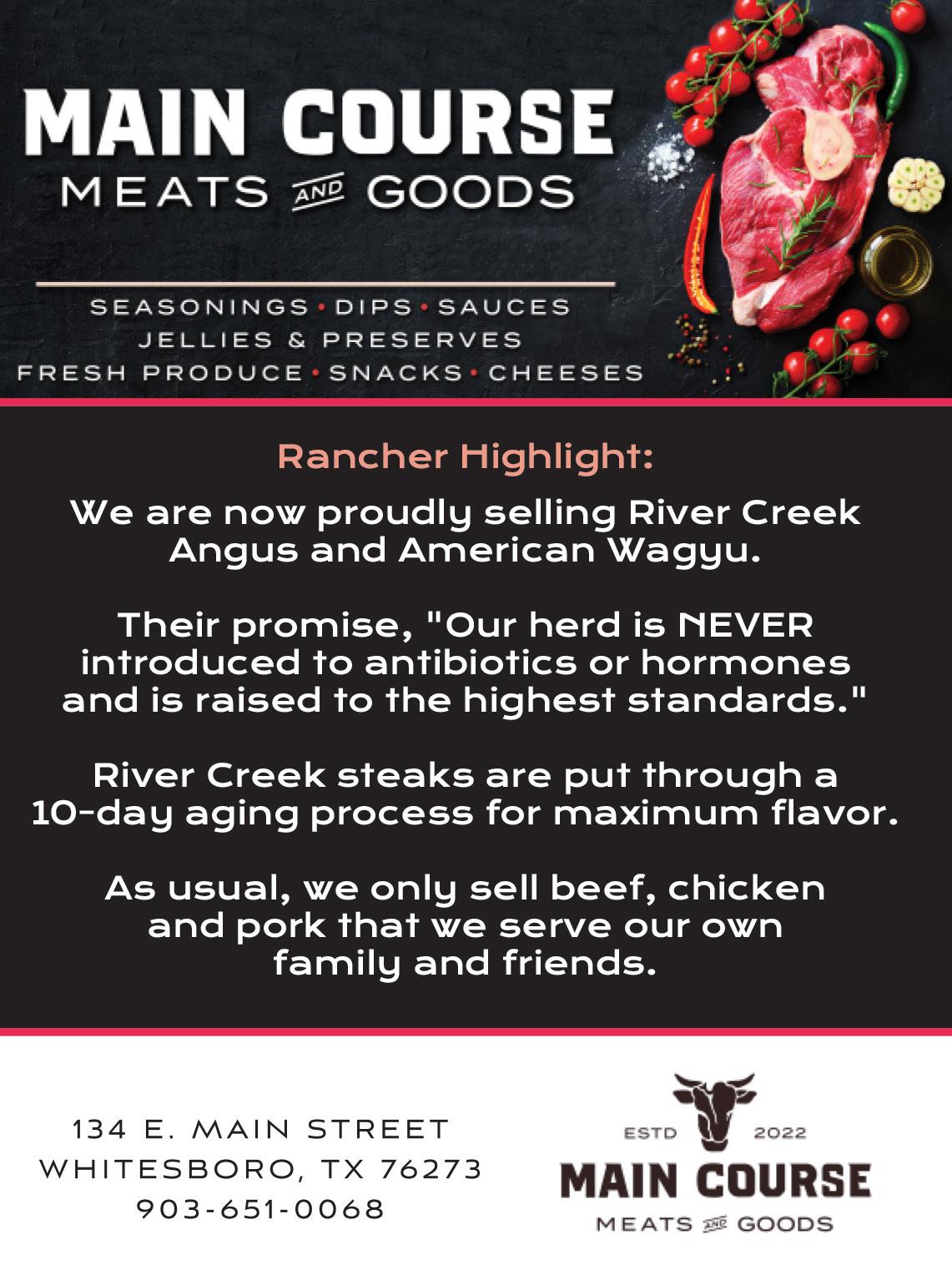
texomafarmandhome.com - 21
(Courtesy photo)
COOKING
From page 21
tent. Personally ground meat will be fresher, especially when you get nice cuts of meat directly from your local butcher. Top chefs suggest dicing cold meat into chunks and freezing for about 10 minutes prior to grinding for the best results.
Fat is key
For the most juicy, flavorful burger, you’ll want a ratio of 80 percent meat to 20 percent fat. Some people like to eat lean, but with a burger, the fat will be necessary and it’s better to select leaner meats for other dishes.
Don’t overwork the meat
Handling the burger patties too much can lead to dense, tough burgers. Gently shape the burgers into round, 1-inch thick, flat discs. To prevent the burgers from rounding in the middle during cooking, press a dimple with your thumb in the center of the patty to help it cook evenly. It’s a smart idea to weigh each patty to ensure uniformity of size and even cooking.
Don’t add salt early on
Salt added to the ground meat before it’s shaped can draw the liquid out of the meat, leaving behind a dry burger. Sprinkle salt sparingly while it is cooking for flavoring.
Avoid overcooking
Most health authorities recommend not leaving any pink meat in a burger made from ground meat. According to BBC Good Food, burgers can be cooked for 5 to 6 minutes on each side for medium and 8 to 9 minutes per side for well done. For the best results, use a food thermometer to check internal temperature. The USDA says ground meat, whether it’s pork, veal, beef or lamb, should be cooked to 160 degerees.
Flip as desired
The cooking resource Serious Eats debunked the myth that burgers should only be flipped once. Flipping the burger repeatedly, as often as once every 15 seconds, encourages faster, more even internal cooking and can dramatically reduce cooking time.
Keep the patties separate
Let everyone build their own burgers, as keeping the cooked meat away from the burger buns for as long as possible will reduce the chances of the juices making the buns soggy. Soft, squishy buns tend to make for good burger eating, as they will not overwhelm the meat with too much crusty bread.
The smell of grilling burgers is in the air. Ensure that every burger is a masterpiece by utilizing some important cooking tips.

22 - texomafarmandhome.com
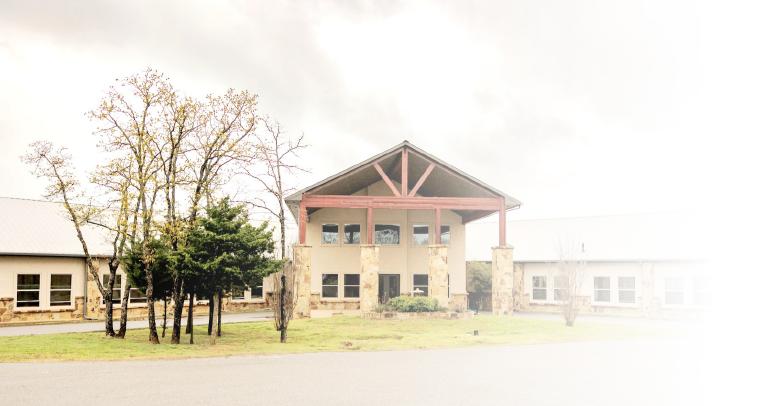



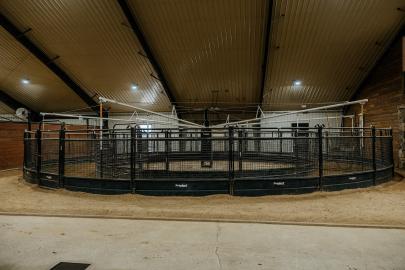

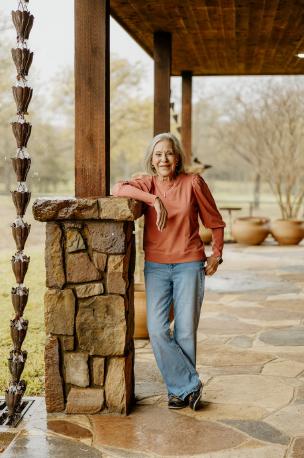

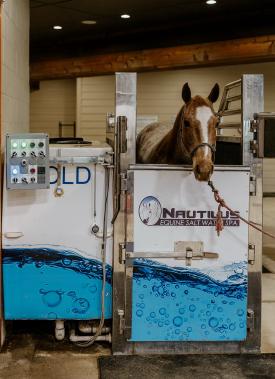

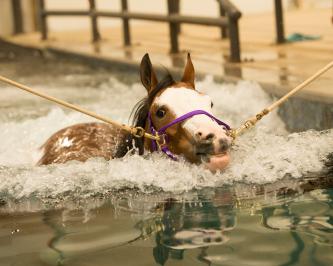

MAY/JUNE PACKAGE - $600 7 Day Board • 2 Aqua Tread • 2 Therapy Plate with Solarium 1 Nautilus Cold Tank • 2 Full Body Laser Treatments Free AO Body Scan with AI Technology Ramona Caldwell Owner 903-818-6616 www.EquineAquaSpaCenter.com
World class equine research is underway in North Central Texas
One might picture an older man dressed in a white lab coat, moving meticulously between vials and petri dishes in an air-conditioned lab when envisioning a scientist or professor. Although this isn’t too far-fetched of a visualization, the equine professor of the Tarleton State University College of Agriculture and Natural Resources department looks a little different.
Dr. Jessica Leatherwood, associate professor and graduate coordinator, is a Texas native who has always had one foot in the door of the equine industry.
“I got my first horse when I was in second grade, and although my parents thought horses were a phase, I proved them wrong,” Leatherwood said.
by Mackenzie Johnson
Leatherwood’s love of horses earned her a scholarship at Texas A&M University to ride on the women’s equestrian team, leading her into working for the Texas A&M Agrilife as a summer horsemanship school instructor. From there, Leatherwood became interested in equine research. “My senior year I took undergraduate research where I became involved in experiences that shaped the course of where I am today as a faculty member,” Leatherwood said.
Leatherwood comes from a successful background, and received her bachelor’s, master’s and doctorate in Animal Science from Texas A&M before joining the faculty of Tarleton
Continued on page 26
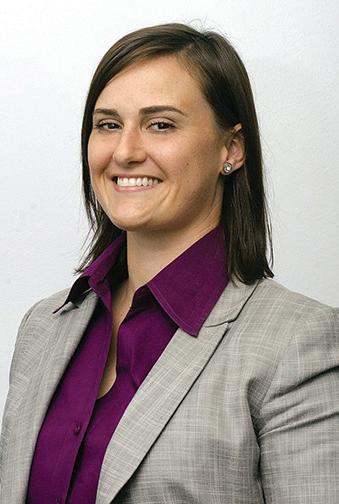

24 - texomafarmandhome.com EQUINE
Jessica Leatherwood

Dennis Farm Store FP.pdf 1 2/7/2024 8:19:02 AM
EQUINE
From page 24
State University in 2023. She’s been able to further her research on equine welfare to new heights at Tarleton.
“My lab focuses on performance longevity in young horses, particularly related to musculoskeletal health,” Leatherwood said. “I really enjoy working with yearlings to three olds, from (implementing) dietary intervention strategies all the way to pharmaceuticals.”
The majority of Leatherwood’s research is done on Quarter Horses. The breed has multiple disciplines with futurities paying out millions to top performers. With much at stake, lots of pressure and investment is put on the young horses.
“Particularly in futurity age horses, there’s alway this notion of needing to fix an injury now to return it to training rather quickly,” Leatherwood said. “We’ve gotten into this mindset where we’re always training by a calendar and not see-
ing what that horse is telling us. If a horse can perform successfully and be sold for a lot of money, it’s good for the industry but doesn’t always reflect the long term welfare of that horse.”
The Tarleton State University Animal Science department and faculty is grateful to house Leatherwood’s research on changing this stereotypical mindset.
“Dr. Leatherwood is an exceptional equine researcher and educator,” Dr. Trinette Jones, Tarleton associate professor and interim head of the animal science department, said of Leatherwood. “She values student experiences and applied learning opportunities… Students come away from those experiences with a better understanding of their coursework as well as an appreciation for equine research.”
Although Leatherwood is the face of the research, she credits her team for working beyond the parameters of the lab to help uncover skeletal breakdown in young horses.
“What makes our group and collaborators really unique is that we do the hard day to day work of maintaining 30 horses on a project along with the daily rigor of feeding, cleaning stalls and exercising these horses,” Leatherwood said.
Despite the stringent work that comes into play with undertaking such a large research project, Leatherwood’s team feels fortunate for the opportunity to work alongside her.
“Dr. Leatherwood is an incredible adviser and mentor,” Lauren Payel, a master’s student and research helper in Leatherwood’s program, said of the equine professor. “She has been instrumental in helping me reach many goals in my career, and I am grateful for her leadership and all she has done to guide me in my educational and professional pursuits.”
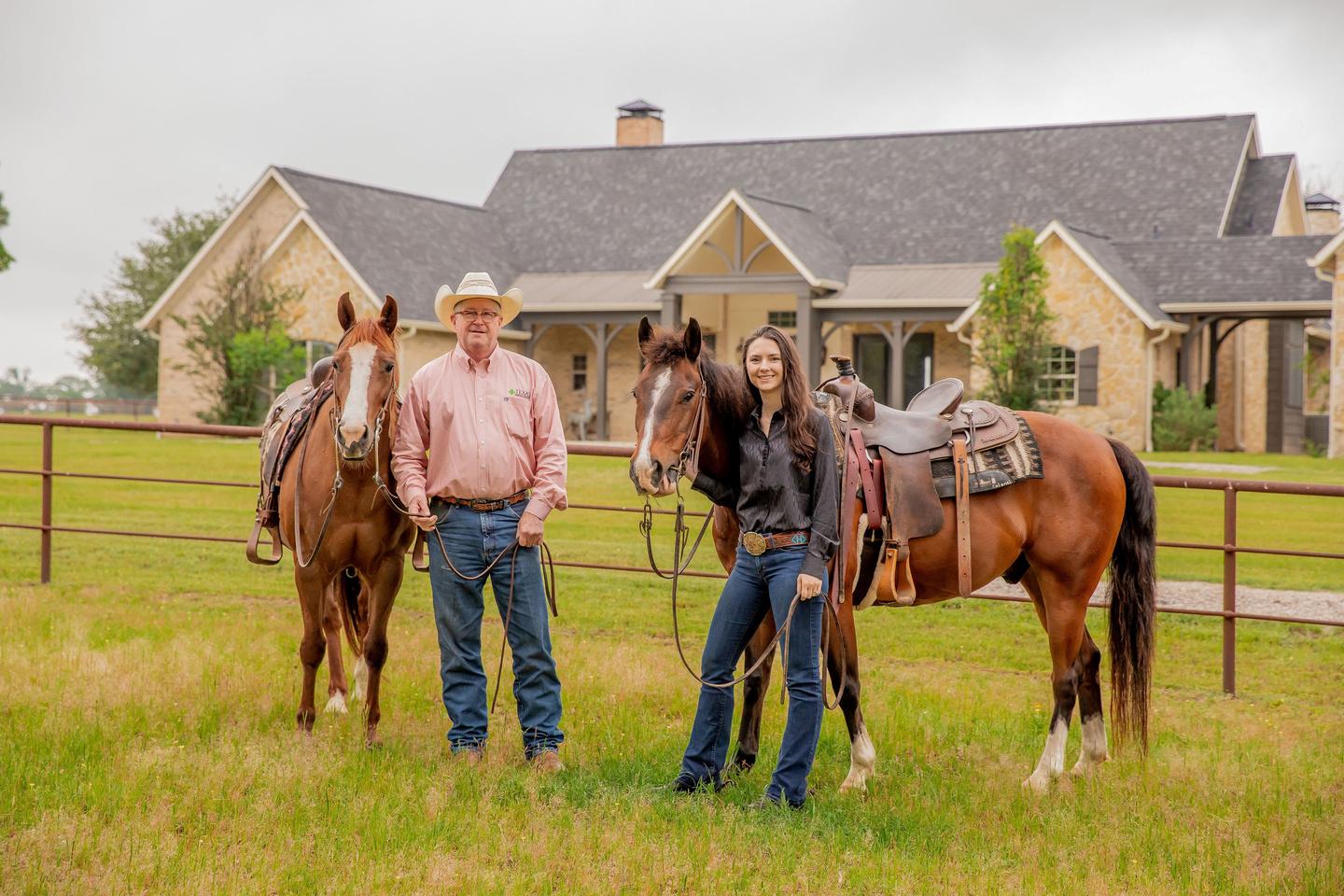

Leatherwood and her team strive to learn more about cartilage synthesis degradation, but above all else, want to see young performance horses have an extended career well into their teens.

26 - texomafarmandhome.com WE'VE BEEN LIVING & LENDING OUT HERE FOR OVER 100 YEARS OUR LOANS & SERVICES INCLUDE: TexasFarmCredit com/Mortgage Rural Homes on Acreage Construction Financing Homesite & Lot Loans Mortgage Refinance Options Traditional Mortgages (including non traditional homes) BILLY LEAVITT NMLS#: 231178 | 469-318-6841 BLeavitt@TexasFarmCredit com M O R T G A G E T E A M L E A D HAYLEY BIRDSONG NMLS#: 2075118 | 903-504-4993 HBirdsong@TexasFarmCredit.com M O R T G A G E L O A N O F F I C E R BLAKE LUDOLPH NMLS#: 1626723 | 903-969-0736 BLudolph@TexasFarmCredit.com M O R T G A G E L O A N O F F I C E R
19th Annual Bullfest is back in St. Jo
The legendary Bullfest is returning to St. Jo, Saturday, May 4.
This year will mark the 19th year of Bullfest, but only the second year to be held at the St. Jo Riding Club Arena in St. Jo, Texas. The evening will begin at 7 p.m. with the mutton bustin’, followed by the calf scramble and the lady’s steer scramble.
The main event, the bull riding, will begin at 8 p.m. The bull riding will feature some of the best riders in the business on the backs of the best bulls from stock contractors, Dale Lyons and Johnny Locke, along with numerous other contractors.
Lyons, owner of Big L Rodeo Co. and Locke, owner of Locke Bucking Bulls, work together to host this event. While the event has been in St. Jo for two years now, it has not always been. The event was hosted in Nocona, Texas for 17 years, before finding its new home in St. Jo.
“Last year we had a scheduling conflict at Nocona and we were told to just move our event to another day. And I said well, no we can’t. If we don’t have bull riders, we have no event,” said Locke. “It took us a long time to find a day that worked that catches bull riders in our end of the country,” he said.
More than 25 bull riders from all over the world traveled to small town St. Jo to ride upon the backs of some of the rankest bulls in the industry last year. Books open
 by Kiley Morgan Greg Truax
by Kiley Morgan Greg Truax
Monday, April 29, from 5 - 10 p.m. Depending on the number of entries, there could possibly be a long go and a short go. The long go would consist of all riders who entered the event, and the short go would feature the best riders from the long go.
At the St. Jo Bullfest, you can find up and coming, young bull riders, and you can find the guys that have made many eight second rides in their long career. “It’s as big time as we can get without being a PBR (Professional Bull Riding) event,” said Locke.
2004 PBR World Champion, Mike Lee, has a teenage son, Noah Lee, who will most likely be competing at the Bullfest this year, according to Locke. Other potential riders include last year’s Bullfest champion, Clancy Hart, and professional bull rider Ryan McConnel.
In the rodeo world, friends become family and their support is like none other. Locke explained that one year he felt close to giving up on the Bullfest because of the lack
of profit, accompanied by negative talk of certain people. Just before throwing in the towel, Locke’s friend and Bullfest sponsor, Chris Petty, changed Locke’s mind. Petty had a Texas Flag painted in the shape of a bucking bull on the side of his store, Conoco One Stop, in Nocona, Texas. Above the bull reads “Locke Bucking Bulls.”
“You know I wanted to quit, and then Chris has this bull painted on the west side of his store and I thought well, I guess I’m not quitting,” Locke said.
Locke owns Locke Bucking Bulls with his wife, Cheryl, and their kids, as well as his
brother David and his family. “It takes everybody to make this deal work,” said Locke.
Due to weather, the festival side of the Bullfest was cut short last year. “The bull riding was good, we bucked in the mud. It was our first year at St. Jo and we were going to knock it out of the park. It was set up to be a great concert with Colton Rice, but the storm kind of messed us up. That’s just a chance you take with a springtime rodeo,” Locke said.
“It is a bull riding with a dance, not a dance with the bull riding,” Locke laughed and said. This year, the dance
Continued on page 28

texomafarmandhome.com - 27
RODEO
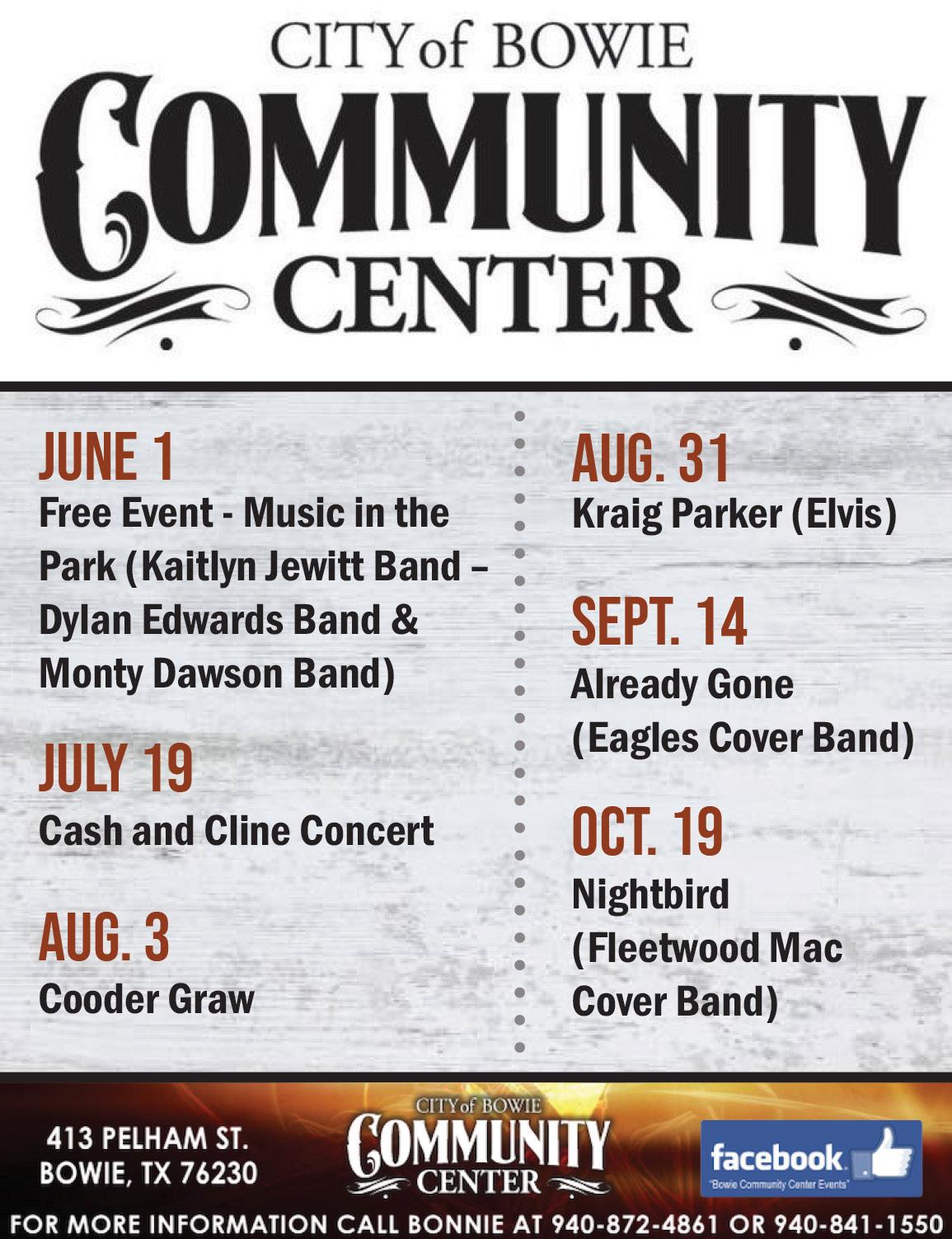
eat up everything, and still, they’re that anidividends, o f tempo63 knee-high,” the goats respect it most of the time. t h e ys. right Pierce goats al t 5 he ube: Ranch. fo r
RODEO
From page 28
will follow the bull riding and feature Gabe Choate. The dance will be free with Bullfest admission.
Locke’s partner in the Bullfest, Dale Lyons with Big L Rodeo Co., is looking forward to the people that the Bullfest will bring to St. Jo and the entertainment they will experience.
“You know, with the mutton bustin’, the way I see iteach kid comes with a mom and dad and two sets of grandparents. The mutton bustin’ brings in way more people than you would think,” said Lyons. “And the lady’s steer scramble is a crowd pleaser,” he said.
“This is just going to be a real exciting event. We are going to keep things rolling, ex-
lesson; sheep
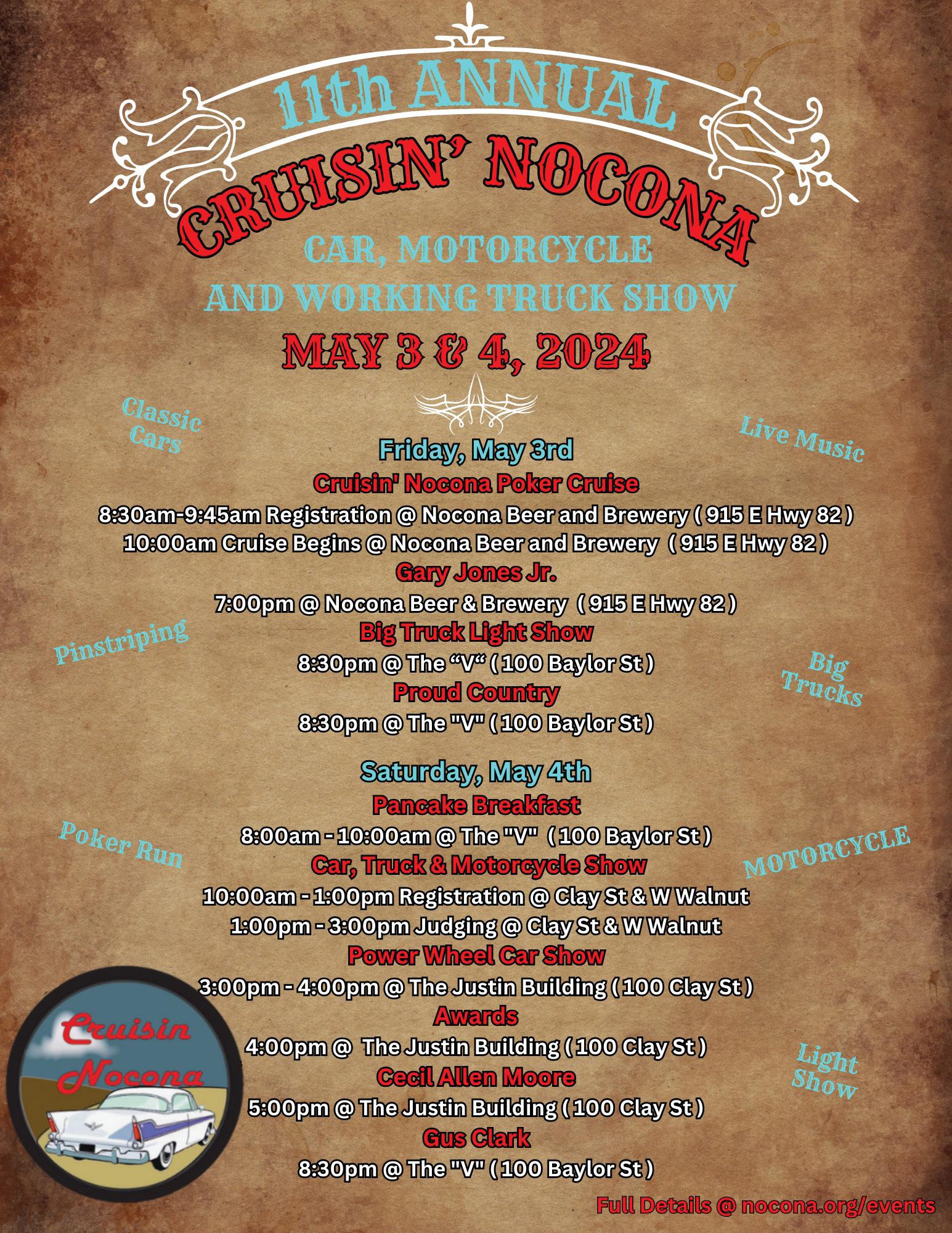
citing and as they say- ‘action packed’,” said Lyons.
The winner of the St. Jo Bullfest will win roughly $2,000 and a pair of Paniolo boots.
Admission to the Bullfest is $10 for adults, if purchased in advance, and $15 at the gate. For children it is $5 in advance and $10 at the gate. Children ages five and under are free. Advance tickets can be purchased at: Fenoglio Boot Store, Nocona; Conoco One Stop, Nocona; Fuel World, Nocona; The Gas Station, St. Jo; and Zimmerer Kubota, Gainsville.
For more information on the St. Jo Bullfest, visit their facebook page- Bull Fest at St. Jo, TX.


DECEMBER 2023 | 43
their
are somewhere in between.(Photos courtesy Noble Research Institute)

This Month’s Featured Pet:

Lavender Ridge is home to a menagerie of animals, ranging from a variety of caged birds and fowl to donkeys and lemurs.
The lemurs at Lavender Ridge

Ahorticulturalist by trade, Jerry Ware has had a longtime hobby of raising caged birds. Visitors to his family business, Lavender Ridge Farms, can see large, outdoor, enclosed habitats that contain doves, parrots and a variety of other birds and animals. Among the most unusual animals on-site are a family of lemurs.
Members of the primate family, lemurs are native to the island of Madagascar. They’re easily recognized by their small, pointed snout, large eyes and long ringtail. They range in size from 1 ounce to 20 pounds. Like other primates, lemurs have divergent digits on their hands and feet, and they typically have nails rather than claws. They’re social animals that
live in troops, and they thrive on a diet of fruits and leaves.
So how is it that a family of lemurs found their way to Lavender Ridge Farms?
A friend of Ware’s was raising a family of lemurs on his land in Whitesboro, but the population was outgrowing his available space. Ware agreed to relocate a couple of the lemurs to Lavender Ridge Farms, where they could live a happy life and people could come and enjoy watching their antics.
The lemurs are a fun surprise for folks coming to enjoy the beautiful garden center, shop and café at Lavender Ridge Farms. Be sure to stop by and snap a photo the next time you’re there.

30 - texomafarmandhome.com 618 N 8th St. Gunter, TX 75058 9659 US-377 Collinsville, TX 76233 PETS
Texoma Farm & Home
Oil Change • Feed • Ranch Supplies Welding Supplies/Repair BADBOY Dealer
(Photo by Jessica Edwards)





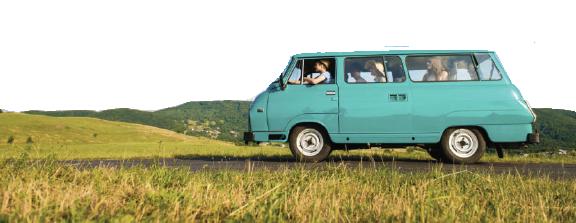




 Jessica Edwards
Jessica Edwards




























































 by Kiley Morgan Greg Truax
by Kiley Morgan Greg Truax















